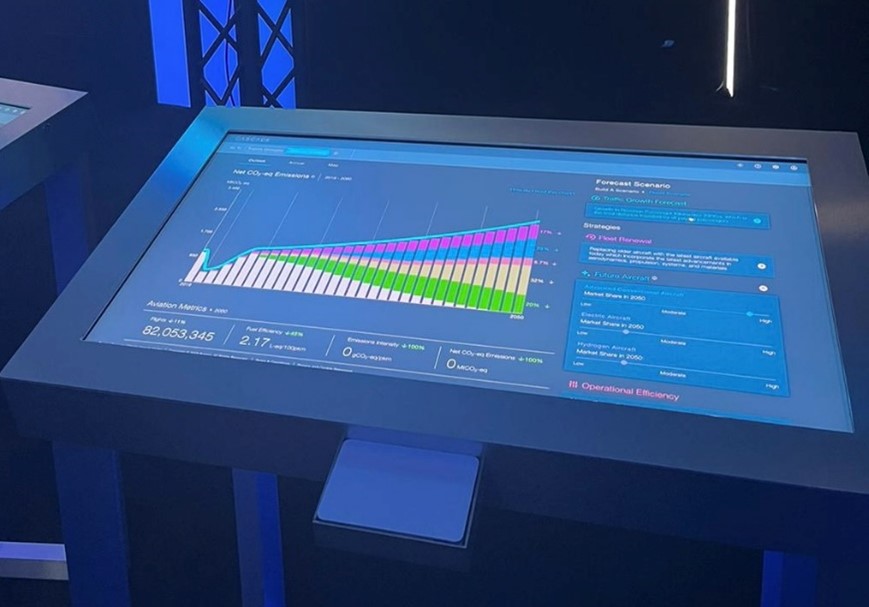In May, Aviation Impact Accelerator (AIA) partner Boeing launched their ’Cascade’ Climate Impact Model to support commercial aviation’s path toward net zero emissions. The data modelling tool is available to the public, and it identifies the effects of a range of sustainability solutions to reduce aviation’s carbon emissions.
The AIA collaborates with Boeing on the use of whole system modelling for driving change in the aviation industry and is delighted to have contributed to this important project.

Cascade examines the full life cycle of alternative energy sources for aviation – from production through distribution and use – and quantifies the ability of each solution to cut aviation’s carbon emissions. Its data modelling capacities also allow it to measure airplane fleet renewal, operational efficiency, renewable energy sources, future aircraft, and market-based measures as pathways to decarbonization.
“We created Cascade to serve as an industry tool that creates a common framework among aviation, energy, finance and policy,” said Boeing Chief Sustainability Officer Chris Raymond. “By putting data first and sharing this model with the public, we are enabling collaboration, feedback and alignment across industry, government and others who work together to achieve a more sustainable aerospace future.”
“Cascade helps airline operators, industry partners and policymakers see when, where and how different fuel sources affect their sustainability goals,” said Neil Titchener, Cascade Program Lead. “Our industry has really hard questions ahead of us, we’re going to have to make difficult choices. Cascade can be the conversation starter for how each decarbonization pathway can help us reach a more sustainable future.”
The Cascade launch event was held at Boeing’s first Sustainable Aerospace Together Forum, a conference that brought together key stakeholders in commercial aviation, government, and the energy and finance industries. AIA lead Rob Miller and technical lead Dr Paul Hodgson attended the launch to represent the AIA, which is one of the four founding members of the Cascade User Community, along with IATA, NASA and the MIT Laboratory for Aviation and the Environment. “The Cascade User Community will ensure the tool and data sources continues to get feedback and evolve for informed and effective discussions towards achieving net zero emissions by 2050,” said Raymond.

Prof Rob Miller, Director of the Whittle Laboratory, and AIA lead said, “We are delighted to have been part of the development of Cascade and to have the opportunity to continue to contribute to the tool as part of the User Community. Interactive models, like Cascade and the ones the AIA develops, are essential tools as we drive forward a complete sector transformation and seek to make decisions with long-term consequences in the face of great uncertainty. Alongside these tools, a mind-set change is required, one that embraces innovative ways of working between academia, industry, and government, and across disciplines and geographies.”
At the Sustainable Aerospace Together Forum, Prof Rob Miller also participated in a panel discussion on ‘Technology Focus: Using data and digital tools to accelerate decarbonization,’ alongside fellow panelists Florian Allroggen (Executive Director Aerospace Climate and Sustainability at MIT), Alejandro Block Novelo (Manager New Energy and Technologies at IATA) and Eric Hendricks (Co-Lead of Systems Analysis and Integration at the Advanced Air Transport Technology (AATT) Project, Glenn Research Centre, NASA).

The event was streamed by FT Live and recorded sessions can be found here